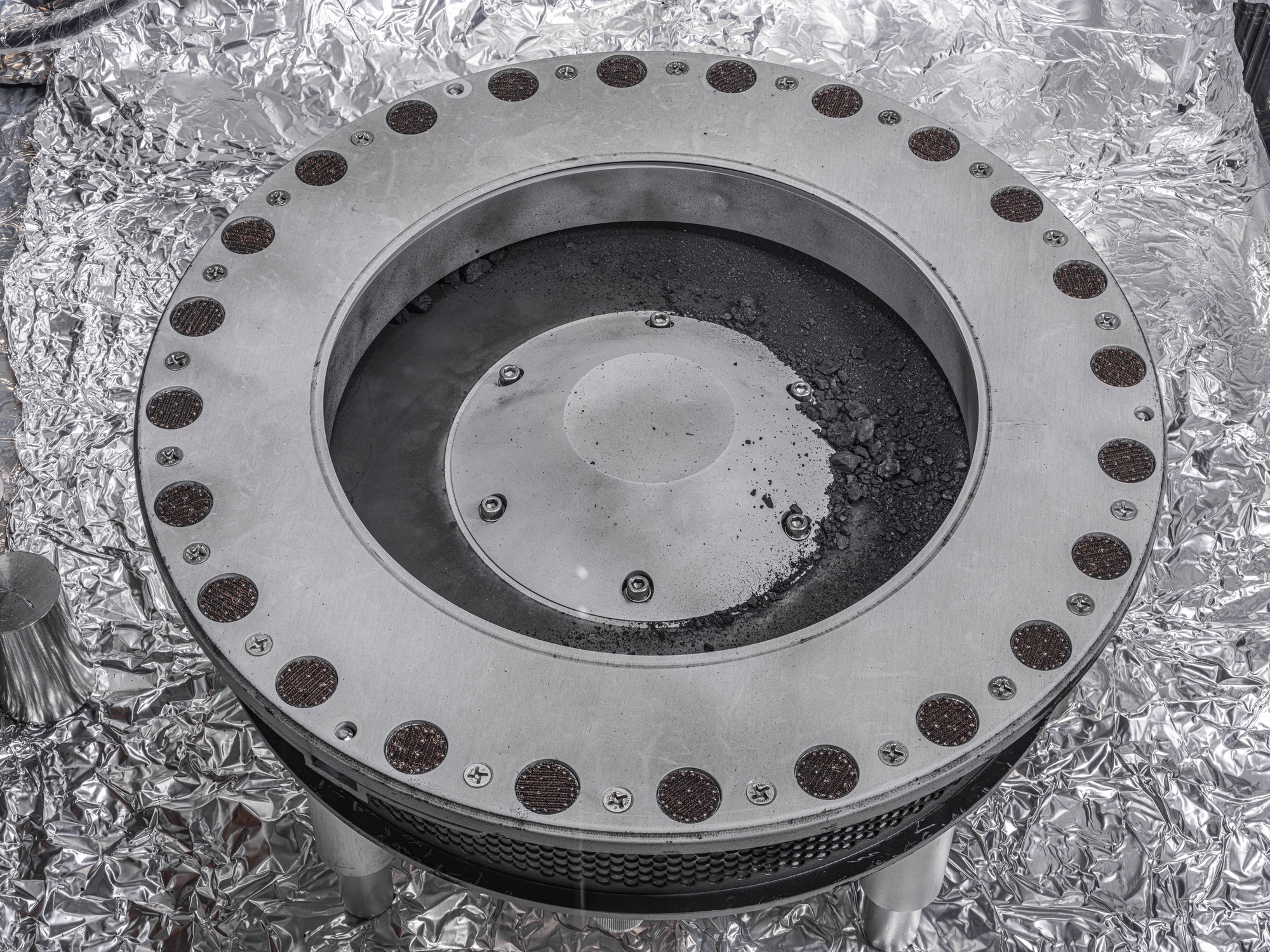WASHINGTON — Scientists said they are thrilled with an initial assessment of asteroid samples returned by a NASA spacecraft last month even though they still don’t know how much material that mission brought back to Earth.
NASA unveiled samples of the asteroid Bennu returned by its Origins, Spectral Interpretation, Resource Identification and Security – Regolith Explorer, or OSIRIS-REx, spacecraft during an Oct. 11 event at the Johnson Space Center in Houston. The center is home to an astromaterials curation facility that the agency delivered the OSIRIS-REx sample canister to a day after it landed in the Utah desert Sept. 24.
An initial analysis of material showed evidence of water, in the form of hydrated minerals, and a high abundance of carbon. Scientists said the material studied so consisted of 4.7% carbon by weight, among the highest levels of any meteorites studied.
Scientists had hoped that the OSIRIS-REx samples would help them understand the formation of the solar system and the building blocks of life on Earth, and that quick-look analysis appeared to confirm that.
“We picked the right asteroid and, not only that, we brought back the right sample,” said Daniel Glavin, a co-investigator on the mission at NASA’s Goddard Space Flight Center, at the event. “This stuff is an astrobiologist’s dream.”
That analysis was based on a small amount of material, with an estimated mass of less than 1.5 grams, seen when the sample canister was opened. The bulk of the sample is inside the head of the Touch And Go Sample Acquisition Mechanism (TAGSAM), the device that plunged into the surface of Bennu during the October 2020 sampling run, capturing material from the asteroid.
The presence of that “extra bonus sample,” in the words of Nicole Lunning, OSIRIS-REx curation lead, was not unexpected. Immediately after the sampling run, material was seen leaking from the TAGSAM, which scientists believed was because the device was full of material, including particles large enough they could keep the TAGSAM head from sealing shut as designed. Spacecraft controllers then expedited the installation of the TAGSAM head in the sample canister to limit the loss of material.
The amount of that extra material, though, is slowing down efforts to open the sampling head. “We found a lot more sample than we were anticipating before even getting into the TAGSAM,” said Francis McCubbin, OSIRIS-REx astromaterials curator. “Because we need to very meticulously and carefully collect every grain, it’s taking us a little longer to get inside.”
Because of that methodical process, scientists have yet to measure exactly how much material the spacecraft returned from Bennu. Before the sample return capsule landed last month, scientists said they estimated there was 250 grams of asteroid material inside, with a margin of error of 101 grams. That is well above the mission’s goal of returning 60 grams.
Dante Lauretta, principal investigator for OSIRIS-REx at the University of Arizona, said in a call with reporters he expected to know the mass of the sample inside the TAGSAM head in about two weeks. “We’re already thrilled with the results” of the initial sample analysis, he said.
The overall process of curating the samples returned by OSIRIS-REx will take two years. That will include transferring some samples to partners on the mission, the Canadian Space Agency and Japan’s space agency JAXA, as well as samples that will go on public display in three museums. The bulk of the sample will be preserved at JSC to be studied by scientists for decades to come. “This is the legacy of OSIRIS-REx and of sample return broadly,” said McCubbin.
“There’s so much more to learn,” NASA Administrator Bill Nelson said at the event. “This sample return is proof again that NASA does big things, things that inspire us and unites us.”
